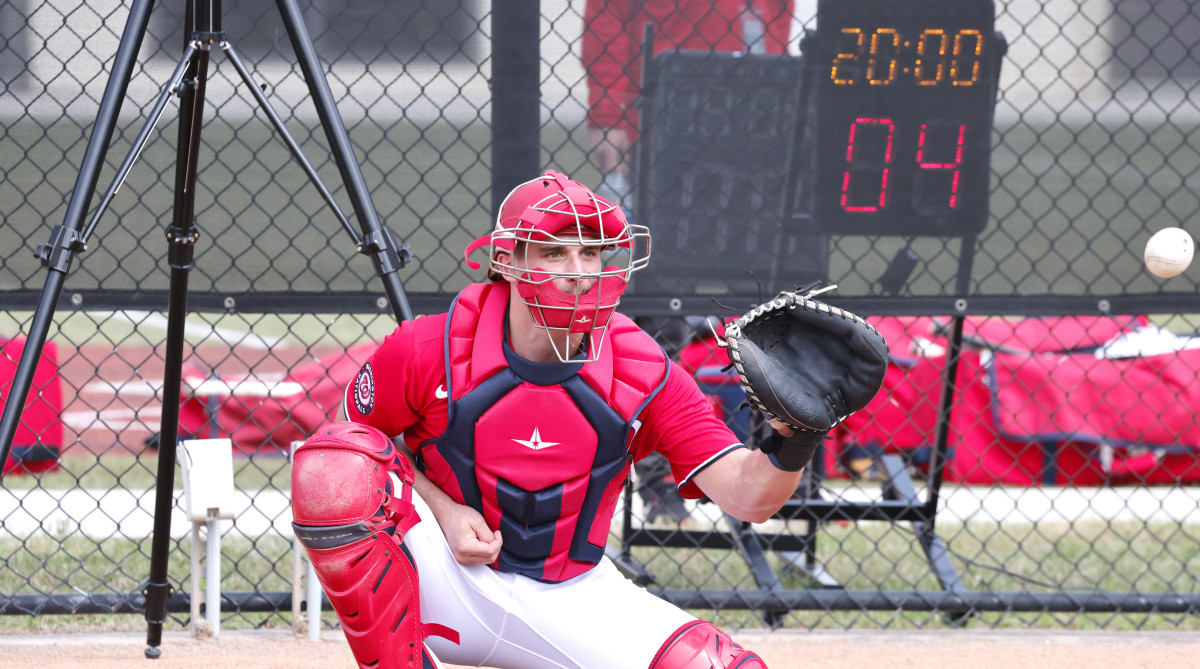MLB’s New Pitch Clock Sends Hitters Into the Unknown
There’s no escaping the clocks. In every spring training complex, on every main field and backfield, teams are keeping time.
This is how MLB is preparing for its new pitch clock. In these early spring bullpen sessions and rounds of live batting practice, pitchers have been working with the timer, knowing they will have to do so for real when spring training games start on Friday. But there’s another portion of the rule: The hitter is subject to the pitch clock, too. And that side of the equation is much harder to work on in advance.
“That’s the unknown,” says Orioles manager Brandon Hyde.
For pitchers, the clock means they can take no more than 15 seconds to deliver a pitch with the bases empty and 20 seconds with runners on. For hitters, it means they can step out of the box just once per plate appearance and must be ready to hit at the eight-second mark. There’s been plenty of focus on what this means for pitchers—a “pitch clock,” after all, is reasonably tied to the man delivering the pitch. But it asks equally as much from the hitters.
“The batter’s box thing might be a bigger issue than the pitchers’ thing,” says Braves manager Brian Snitker. “Guys are so used to stepping out, fixing their gloves, everything like that.”
Yet preparing hitters for this change is tricky. They’re used to being able to call time whenever they desired. A particularly stressful plate appearance might have previously entailed stepping out of the box several times. Adjusting their uniform. Taking a few deep breaths. Undoing and redoing the Velcro on their batting gloves. Maybe repeating all of the above. Which, of course, is exactly why this rule was put in place: MLB wanted to cut out as much of that dead time as it could. But it means there’s a lot for batters to change—as much psychological as physical.
And given the reactive nature of hitting, it’s more difficult for hitters to know how the clock will feel than it is for pitchers, who have been practicing with the timer all spring. Of course, there’s no replicating the environment of pitching in a real game, with all the attendant stressors that might cause someone to need more time. They can’t simulate a real game even with a sim game—and certainly not with a bullpen or live BP. By using the timer in all of those contexts, however, pitchers can still get a feel for how their delivery works (or not) against the clock.

For hitters … it’s tricky. They can’t set the pace of any given plate appearance the way a pitcher can. While a pitcher can work quickly or slowly, a hitter can only slow him down, and now, he won’t even be able to do that. That’s a hard dynamic to practice. Of course, hitters can use the timer in live BP, too. (Many teams are.) But most hitters already know they can take swings without stepping out of the box in BP. It’s specifically the context of hitting in a faster game situation that feels tricky—and that can’t truly be replicated in any practice or drill.
“Some guys are going to have to change their whole routines,” says Pirates manager Derek Shelton. “Getting used to the tempo of the game speeding up on them—that can be challenging.”
So ask managers how they’re preparing their hitters and hear that most of them are simply waiting. They can talk about it in the meantime. But there’s no real substitute for actually playing with the clock in a game.
“We’re going to talk about what the routine should be,” Hyde says. “But we’ll probably wait until about 10 games in, sample-size-wise, to be able to be like, Hey, what’s rushing you? What’s not rushing you? Where are you feeling like you’re running into trouble? And then we’ll probably adjust off that.”
In short? It’s easy to tell a player he needs to stay in the box. It’s easy for a player to think he can stay in the box. But when it’s a late inning of a close game with the crowd going and he wants a moment to clear his head? That’s the challenge, managers say. And there’s no way to practice it other than to live it.
“They can say, Okay, I’ll call time once, but then, Hey, I don’t feel right, I want to call time again, but no, I can’t,” Hyde says. “I think that’s what they’re going to have to learn.”
